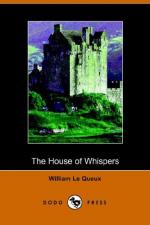An arrow shot from the church fatally wounded one of Campbell’s men, and so enraged were the besiegers at this that they set fire to the heather-thatched building. Of the one hundred and sixty human beings who are supposed to have been in the church, only one young lad escaped, and this was effected by the help of one of the Killearns, who caught the boy in his arms as he leaped out of the flames. The Killearns did not go unpunished for their barbarous deed. Their leader, with several of his chief retainers, was afterwards beheaded at Stirling, and an assessment was imposed on the Killearns for behoof of the wives and children of the Grahams who had perished by their hands.
The Killearn by whose aid the young Graham had been saved was forced to flee to Ireland, but he afterwards returned to Scotland, where he and his attendants were known by the name of “Killearn Eirinich” (or Ernoch), meaning Killearn of Ireland. The estate which he held, and which is situated near Comrie, still bears that name. The site of the Kirk of Monzievaird is now occupied by the mausoleum of the family of Murray of Ochtertyre, which was erected in 1809. When the foundations were being excavated a large quantity of charred bones and wood was found.
The history of Scotland is full of references to the doings at Glencardine, the fine home of the great Lord Glencardine, and of events, both in the original stronghold and in the present mansion, which have had important bearings upon the welfare of the country.
In the autumn of 1825 the celebrated poetess Baroness Nairne, who had been born at Gask, a few miles away, visited Glencardine and spent several weeks in the pleasantest manner. Within those gaunt ruins of the old castle she first became inspired to write her celebrated “Castell Gloom,” near Dollar:
Oh Castell Gloom! thy strength is gone,
The green grass o’er
thee growin’;
On Hill of Care thou art alone,
The Sorrow round thee flowin’.
Oh Castell Gloom! on thy fair wa’s
Nae banners now are streamin’;
The howlit flits amang thy ha’s,
And wild birds there are screamin’.
Oh, mourn the
woe! oh, mourn the crime
Frae
civil war that flows!
Oh, mourn, Argyll,
thy fallen line,
And
mourn the great Montrose!




